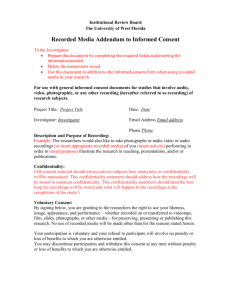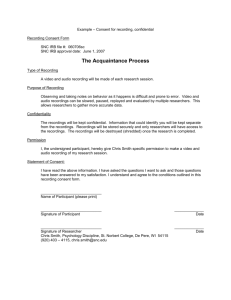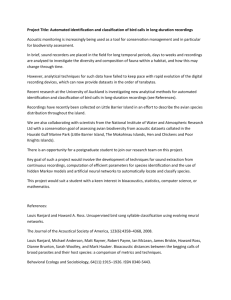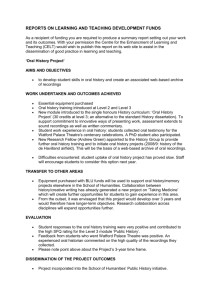Western Carolina University Institutional Review Board Audio/Video/Photographic Recording of Human Subjects
advertisement
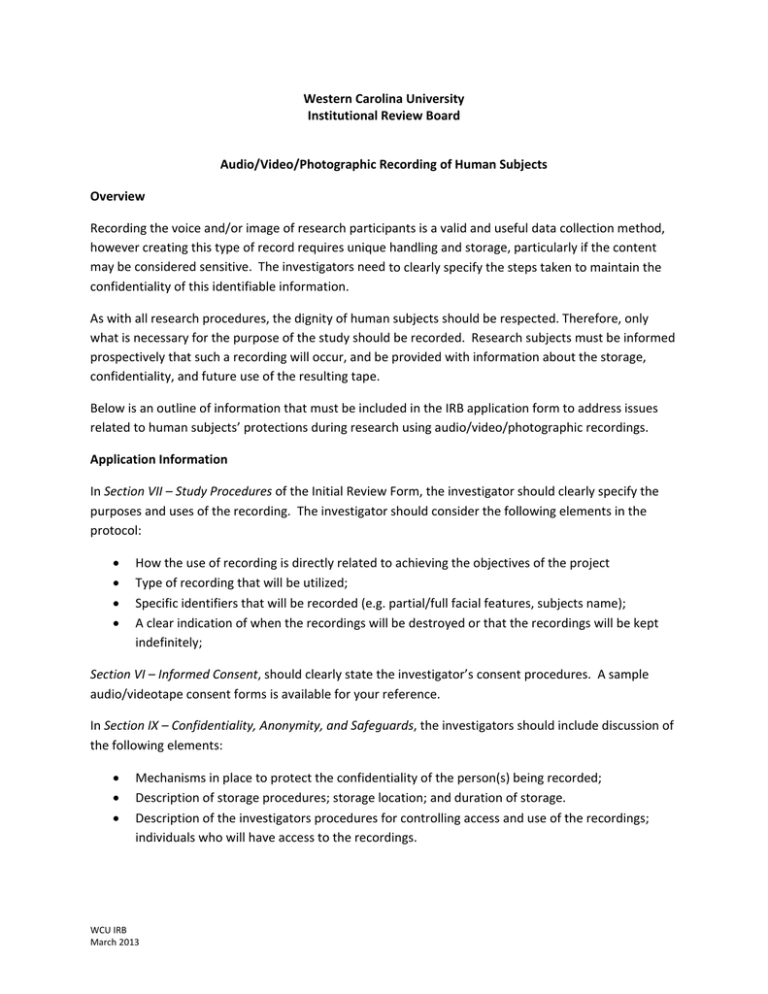
Western Carolina University Institutional Review Board Audio/Video/Photographic Recording of Human Subjects Overview Recording the voice and/or image of research participants is a valid and useful data collection method, however creating this type of record requires unique handling and storage, particularly if the content may be considered sensitive. The investigators need to clearly specify the steps taken to maintain the confidentiality of this identifiable information. As with all research procedures, the dignity of human subjects should be respected. Therefore, only what is necessary for the purpose of the study should be recorded. Research subjects must be informed prospectively that such a recording will occur, and be provided with information about the storage, confidentiality, and future use of the resulting tape. Below is an outline of information that must be included in the IRB application form to address issues related to human subjects’ protections during research using audio/video/photographic recordings. Application Information In Section VII – Study Procedures of the Initial Review Form, the investigator should clearly specify the purposes and uses of the recording. The investigator should consider the following elements in the protocol: • • • • How the use of recording is directly related to achieving the objectives of the project Type of recording that will be utilized; Specific identifiers that will be recorded (e.g. partial/full facial features, subjects name); A clear indication of when the recordings will be destroyed or that the recordings will be kept indefinitely; Section VI – Informed Consent, should clearly state the investigator’s consent procedures. A sample audio/videotape consent forms is available for your reference. In Section IX – Confidentiality, Anonymity, and Safeguards, the investigators should include discussion of the following elements: • • • Mechanisms in place to protect the confidentiality of the person(s) being recorded; Description of storage procedures; storage location; and duration of storage. Description of the investigators procedures for controlling access and use of the recordings; individuals who will have access to the recordings. WCU IRB March 2013 Storage and Future Use Considerations If you expect to store your recordings in ways that will enable others to use the recordings, or if you expect to use the recordings in additional research projects that are not directly related to the objectives of the study under which they were initially created, this must be explicitly stated in the protocol and in the informed consent form. If you anticipate that other researchers may request to use the videotapes outside your research project, then you must specify the procedures to be used to grant other researchers access to the recordings. The informed consent form should state that other researchers may use the recordings in the future. If you expect to archive the recordings in a manner which access to the tapes will be controlled by other individuals, libraries, or collections, explicitly state the qualifications of the guardians of the recordings and the procedures they will follow to protect the confidentiality of the participants when other researchers request access to the recordings. The passage of time does not diminish your responsibility to protect the confidentiality of the participants in your research. The rights of a participant do not expire at the end of a research project, or after any other period of time. Recordings cannot be considered secondary data as long as the tapes contain identifiable information. WCU IRB March 2013
